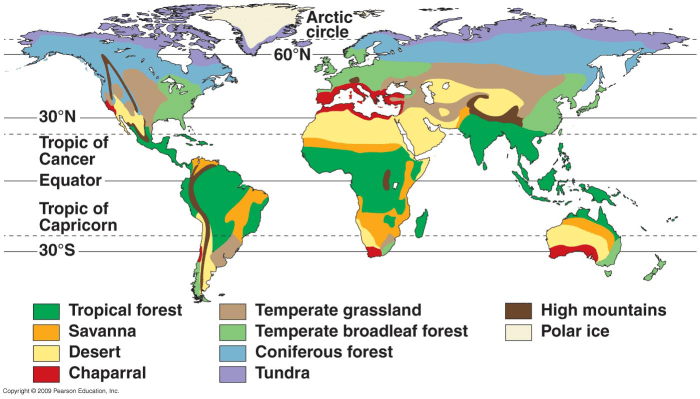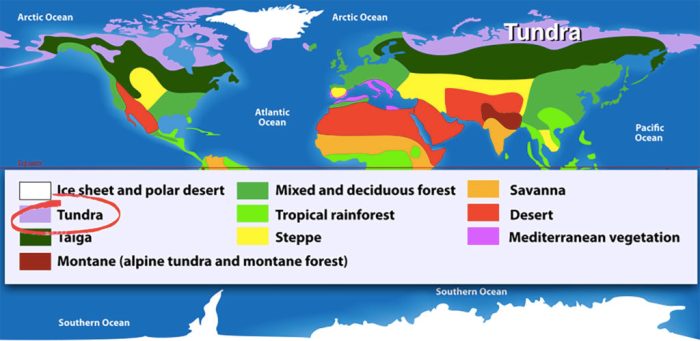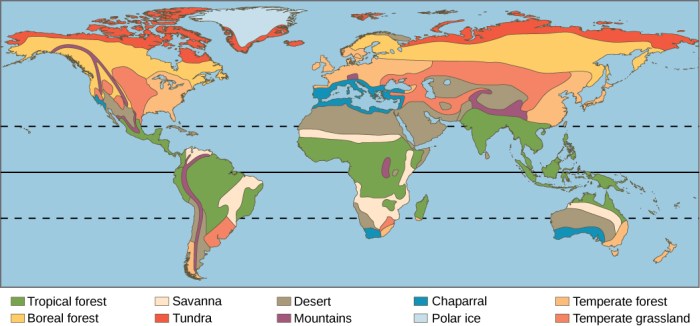Which of the following is incorrect regarding tundra climates? Delving into this intriguing question, this exploration unveils the defining characteristics, misconceptions, and captivating intricacies of these unique ecosystems. From the vast, frozen landscapes to the resilient flora and fauna that call them home, this discourse promises an enlightening journey into the enigmatic world of tundra climates.
Tundra climates, characterized by their frigid temperatures, sparse vegetation, and underlying permafrost, present a unique set of challenges and adaptations. Understanding the intricacies of these ecosystems requires a critical examination of common misconceptions, separating fact from fiction to gain a comprehensive understanding of their delicate balance.
Definition of Tundra Climates: Which Of The Following Is Incorrect Regarding Tundra Climates

Tundra climates are characterized by their cold temperatures, short growing seasons, and lack of trees. They are found in the Arctic and Antarctic regions, as well as on high mountaintops.
Incorrect Statements Regarding Tundra Climates

One incorrect statement regarding tundra climates is that they are always covered in snow and ice. While tundra climates do experience cold temperatures and snowfall, they also have periods of thaw during the summer months.
Characteristics of Tundra Climates
Temperature Ranges, Which of the following is incorrect regarding tundra climates
Tundra climates have cold temperatures year-round. The average temperature in the coldest month is below -32 degrees Fahrenheit (-36 degrees Celsius). The average temperature in the warmest month is below 50 degrees Fahrenheit (10 degrees Celsius).
Precipitation Patterns
Tundra climates receive low precipitation, typically less than 10 inches (25 centimeters) per year. The precipitation that does occur is often in the form of snow.
Permafrost
Permafrost is a layer of soil that remains frozen for at least two consecutive years. Permafrost is common in tundra climates, and it can have a significant impact on the landscape and vegetation.
Vegetation in Tundra Climates
The vegetation in tundra climates is typically low-growing and sparse. The most common types of plants in tundra climates are mosses, lichens, and grasses. Trees are rare in tundra climates, and those that do grow are typically stunted and shrubby.
The harsh conditions in tundra climates make it difficult for plants to grow. The cold temperatures, short growing seasons, and lack of nutrients all contribute to the stunted growth of plants in tundra climates.
Wildlife in Tundra Climates

The wildlife in tundra climates is adapted to the cold, harsh conditions. The animals that live in tundra climates include caribou, reindeer, musk oxen, and polar bears. These animals have thick fur coats that help them to stay warm in the cold temperatures.
They also have large hooves that help them to walk on the snow and ice.
The animals in tundra climates have also adapted to the lack of food. Many of the animals in tundra climates are herbivores, and they eat the mosses, lichens, and grasses that grow in the tundra. Other animals in tundra climates are carnivores, and they eat the herbivores.
FAQ Corner
What is the primary factor influencing tundra climates?
Low temperatures and short growing seasons are the primary factors shaping tundra climates.
Are tundra climates found exclusively in the Arctic?
No, tundra climates can also be found in the Antarctic and high-altitude regions.
What is the significance of permafrost in tundra ecosystems?
Permafrost acts as a barrier to water drainage, creating unique hydrological conditions and influencing vegetation patterns.